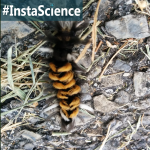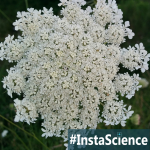Have you seen those soft, velvety and silvery grey-green plants in your next-door neighbor’s garden? Those low-growing, soft textured leaves belong to the ornamental plant, known as the Lamb’s ear. The scientific name of lamb's ears plant is Stachys byzantina and is a native to Turkey, Iran and Armenia in Europe. The plant can best be described as "fuzzy" or "velvety" and the leaves are shaped … [Read more...]
What Do You Say Before A Phonics Lesson?
Things Only Homeschoolers Say: Phonics "Put down your nerf gun; it is time for phonics." More Homeschooling Humor See more things only homeschoolers say or laugh along with our homeschool funnies! … [Read more...]
Blue Crab {InstaScience}
I grew up right off the Chesapeake Bay. I can remember spending lazy summer days swimming in the tributaries of the bay and catching our dinner of blue crabs off the docks. I learned how to tie up a chicken neck like a champ before I learned how to drive. And I used to be able to pick one of these crustaceans clean in a flat minute. Blue crabs are easily spotted because of their bright blue … [Read more...]
Daisies {InstaScience}
Around this time of year we start to see Pumpkin Spiced Lattes and fall colored floral arrangements. Most of these flower bunches include a few daisies thanks to their variety of fall-ish colors. These flowers can be red, pink, purple, yellow, or orange. But their most iconic look is white with a yellow center. With daisies, what we see as one flower is actually a composite flower. Each daisy … [Read more...]
Milkweed Tussock Caterpillar {InstaScience}
As I sat with my cup of coffee in hand looking out at nature the other morning, I spotted a hairy little caterpillar making its way up a milkweed stalk. The furry orange and black creature was a milkweed tussock caterpillar, which are pretty common around this time of year. The milkweed plant is the most common host plant for this type of tussock caterpillar. The female tussock moth lays eggs … [Read more...]
Queen Anne’s Lace {InstaScience}
One of my favorite late summer field flowers is the Queen Anne’s Lace. There is a myth that says this flower has been named after Queen Anne of England who was an expert in making lace. Based on the legends, Queen Anne pricked her finger with a needle and a single drop of blood fell onto the lace, leaving the dark purple floret found in the flower's center. However the color got there, these … [Read more...]
 Sign up below to receive weekly tips & tools for homeschool science and we'll send you a FREE copy of
Sign up below to receive weekly tips & tools for homeschool science and we'll send you a FREE copy of 




